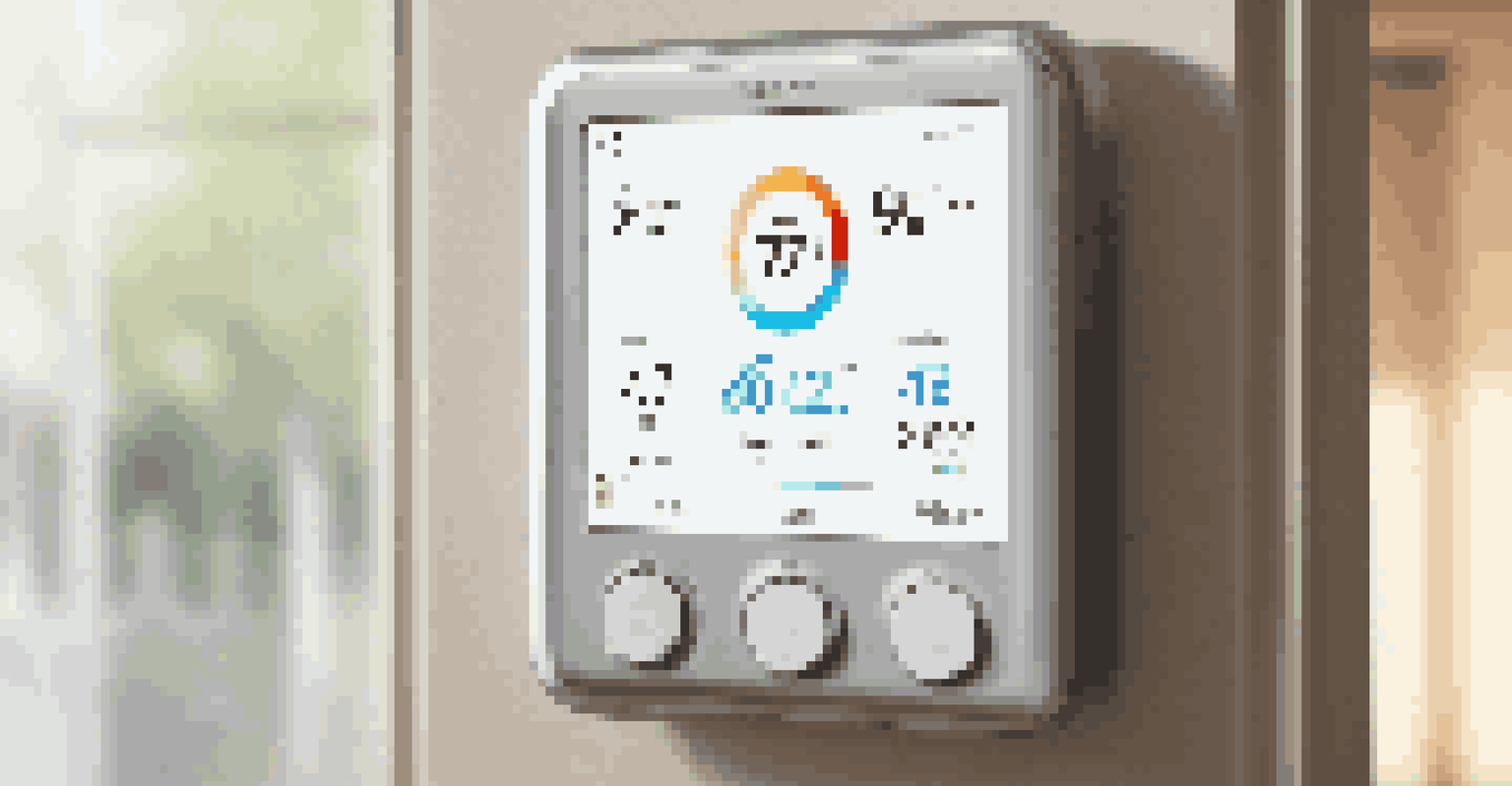Using Home Automation to Monitor and Reduce Energy Waste

Understanding Home Automation and Energy Waste
Home automation refers to the use of technology to control household systems remotely. This includes lighting, heating, cooling, and appliances, all of which can significantly impact energy consumption. Unfortunately, many homes waste energy through inefficient usage, leading to higher bills and environmental concerns.
The greatest threat to our planet is the belief that someone else will save it.
By automating these systems, homeowners can easily monitor and adjust energy usage. For example, smart thermostats learn your schedule and adjust heating or cooling accordingly, ensuring energy isn't wasted when you're not home. This proactive approach helps combat energy waste right at the source.
In essence, integrating home automation into your daily routine can lead to smarter energy management. It's not just about convenience; it's about making informed decisions that benefit both your wallet and the planet.
The Benefits of Smart Thermostats
Smart thermostats are a cornerstone of home automation, providing real-time insights into your energy usage. They can be programmed to change temperatures based on your daily routine, ensuring that energy isn't wasted while you’re away. This feature alone can lead to significant savings on your utility bills.

Imagine coming home to a perfectly heated or cooled house without wasting energy throughout the day. With smart thermostats, you can also access data about your energy consumption patterns, enabling you to make adjustments as needed. This level of control means you can optimize your energy use without sacrificing comfort.
Energy Savings Through Automation
Home automation technologies, like smart thermostats and lighting controls, help reduce energy waste and lower utility bills.
Additionally, many smart thermostats offer integration with other smart devices, creating a comprehensive energy management system. This interconnectedness allows for even greater efficiency, as your thermostat can respond to changes in other areas of your home, further reducing waste.
Lighting Controls: A Simple Solution to Energy Waste
Lighting is one of the most significant contributors to energy waste in homes. Traditional lighting systems often remain on when they’re not needed, leading to unnecessary energy consumption. Smart lighting controls can help solve this problem by allowing you to manage your lights remotely.
Energy conservation is the foundation of energy independence.
With smart bulbs and lighting systems, you can set schedules, dim lights, or even turn them off from your smartphone, ensuring they’re only on when needed. Imagine being able to check if you left a light on while at work and turning it off with just a tap on your phone! This not only saves energy but also offers peace of mind.
Moreover, many smart lighting solutions come with motion sensors that automatically turn lights on and off based on occupancy. This means no more wandering around the house in the dark or leaving lights on in empty rooms—just a simple, efficient way to manage energy use.
Smart Appliances: Efficiency Meets Convenience
Smart appliances are designed to enhance convenience while being mindful of energy consumption. From refrigerators that alert you when the door is left open to washing machines that run during off-peak hours, these devices can help minimize waste. They often come with energy-efficient settings that can be customized based on your needs.
For instance, a smart dishwasher can be programmed to run at night when energy rates are lower, effectively reducing your monthly bills. Many smart appliances also provide feedback on your usage, helping you identify when you might be using more energy than necessary. This data empowers you to make informed decisions.
Smart Appliances Enhance Efficiency
Integrating smart appliances can streamline daily tasks while minimizing energy consumption and promoting a sustainable lifestyle.
Incorporating smart appliances into your home not only streamlines your daily chores but also promotes a sustainable lifestyle. Each small adjustment contributes to a larger impact on energy conservation, making it easier for you to be environmentally conscious.
Energy Monitoring Systems: Stay Informed
Energy monitoring systems provide real-time data on your home’s energy consumption, helping you identify areas where you can reduce waste. These systems typically come with user-friendly apps that allow you to track and analyze your energy usage patterns. This information is invaluable for making smarter decisions about your consumption.
For example, if you see that your energy usage spikes during certain hours, you can adjust your habits accordingly. This might involve running appliances during off-peak hours or unplugging devices that draw power even when not in use. Having this visibility can be a game-changer in your energy management efforts.
Furthermore, many energy monitoring systems can integrate with other smart home devices, creating a holistic approach to energy efficiency. By leveraging technology, you can take control of your energy usage and make meaningful changes that benefit both your budget and the environment.
The Role of Smart Power Strips
Smart power strips are another effective tool in the fight against energy waste. These devices help manage multiple electronics by cutting off power when they’re not in use, preventing phantom loads—energy used by electronics that are turned off but still plugged in. This is particularly useful for home entertainment systems or computer setups.
Imagine you have a home theater system that consumes energy even when it's off. A smart power strip can detect when the main device is turned off and automatically power down the rest of the system. This makes it easier to keep your energy use in check without requiring constant manual effort.
Comprehensive Energy Management Plan
Developing a detailed energy management plan, including regular monitoring and conscious habits, can significantly improve energy efficiency at home.
By incorporating smart power strips into your home, you can streamline energy consumption and reduce waste. It’s a simple yet effective way to ensure that you’re not paying for energy that you’re not actively using.
Creating a Comprehensive Energy Management Plan
To truly harness the benefits of home automation for energy efficiency, consider developing a comprehensive energy management plan. Start by assessing your current energy usage and identifying areas where automation can help reduce waste. This could involve upgrading to smart thermostats, lighting, and appliances, as well as integrating energy monitoring systems.
Once you've implemented these systems, regularly review your energy consumption data to track your progress. This will help you identify trends and further opportunities for improvement. Engaging the whole household in these efforts can also foster a culture of energy conservation, making it a shared responsibility.

Ultimately, a well-rounded energy management plan combines technology with conscious habits, leading to long-term savings and a smaller carbon footprint. By embracing home automation, you're not just improving convenience—you're also making a positive impact on the environment.